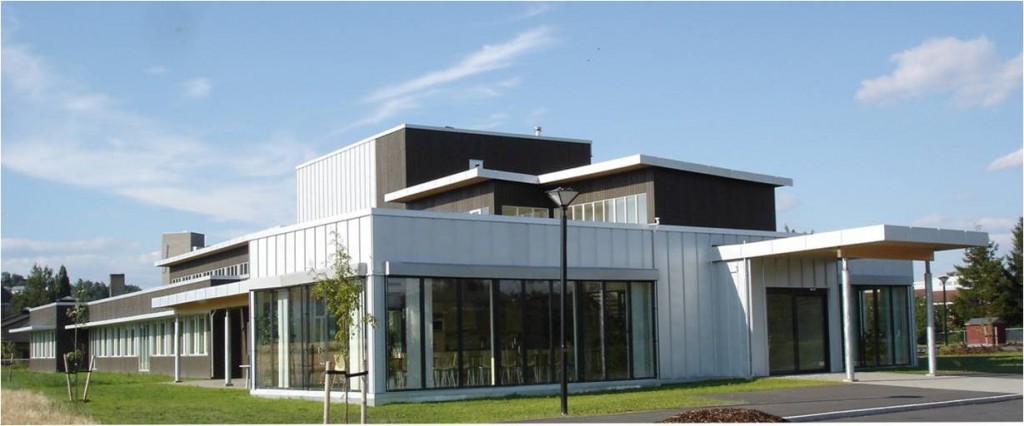Osteoporosis and fractures in the Nord-Trøndelag Health Study
–

–
–
–
–
–
–
–
–
–
–
–
–
–
–
The Nord-Trøndelag health study (HUNT) is a large health study in one Norwegian County. In the adult part of HUNT, all individuals living in the county of Nord-Trøndelag aged 20 years or more have been invited to three studies:
HUNT 1 was carried out in 1984-1986 and established the health history of 75,000 individuals.
HUNT 2 was carried out in 1995-1997 recruiting 74,000 persons and blood samples were obtained from 65,000 individuals.
HUNT 3 was carried out in 2006-2008; just below 50,000 persons participated. The data include information from questionnaires, interviews, clinical examinations and collection of blood and urine samples.
The survey program has gradually been extended and includes many sub-studies. A cohort profile paper and a nonparticipation paper have recently been submitted (March, 2012).
More information about the Nord-Trøndelag health study (HUNT) can be found here.
–
–
Bone densitometry in the HUNT Study
Bone densitometry was performed in HUNT 2, in a follow-up study in 2001, and in HUNT 3. The measurements have been part of the Osteoporosis Study (PI in HUNT2 Berit Schei, in 2001 and HUNT3 Siri Forsmo) and the Lung Study (PI Arnulf Langhammer). About two thirds of the measurements have been performed by the Lung Study, AL has been responsible for the planning, the data collection period, data management and quality assurance of all measurements. Quality assurance has been performed according to the procedure used in the Tromsø Study.
–
–
HUNT 1
The first study on osteoporosis and fractures made use of data from 1984-86 and linked information on health history and potential risk of hip fractures.
–
Publication from HUNT 1:
Forsén L, Bjartveit K, Bjørndal A, Edna TH, Meyer HE, Schei B. Ex-smokers and risk of hip fracture. Am J Public Health 1998;88:1481-3
–
–
HUNT 2
The data collection in HUNT 2 included measurements of forearm bone mineral density by SXA in random subgroups of participants; all women aged 65 and older and random samples of women in selected age groups (n=10 152); as well as a random sample of all women and men participating. Measures of balance, muscle coordination and strength was also included in some of the subgroups.
SXA – (3 DTX100) at distal and ultradistal site non-dominant forearm
–
Invited samples:
Both sexes:
• Subjects reporting ever having had asthma, use of asthma medication or attacks of wheezing or breathlessness during the last 12 months
• 5 % random sample of all participants
Women:
• In 5 largest municipalities: Women born 1954 – 63 (50%), 1936-45 (50%) and 1911-30 (100%)
• In 19 smaller municipalities: Women born 1911-30 (100%)
–
Number of participants:
Women: 13.073 Men: 5.183
–
Publication from HUNT 2:
Forsmo S, Langhammer A, Forsén L, Schei B. Forearm bone mineral density in an unselected population of 2,779 men and women–the HUNT Study, Norway. Osteoporos Int 2005;16:562-7
–
–
Follow-up study in 2001 (substudy)
A follow-up in 2001 included SXA of a subgroup of about 1,400 women. A fracture registry was established, based on information from the two hospitals in the county including both forearm as well as hip fractures.
SXA – (3 DTX100) at distal and ultradistal site non-dominant forearm
–
Invited samples:
Both sexes:
• Subjects reporting use of inhaled corticosteroids in HUNT2
• 5 % random sample of all participants
Women:
• In the 5 largest municipalities: Women born 1936-45 (50%) and 1926-1930 (100%)
• In 19 smaller municipalities: Women born 1936-45 (50 % – not invited in HUNT2)
–
Number of participants:
Women: 5.255 Men: 1.401
–
Publications from the follow-up study:
Forsmo S, Fjeldbo SK, Langhammer A. Childhood cod liver oil intake and bone mineral density in a population-based cohort of peri- and postmenopausal women. The HUNT study, Norway. Am J Epidemiol 2008;167:406-11
Grønskag AB, Forsmo S, Romundstad P, Langhammer A, Schei B. Incidence and seasonal variation in hip fracture incidence among elderly women in Norway. The HUNT Study. Bone 2010;46:1294-8
–
–
HUNT 3
SXA – (2 DTX100) at distal and ultradistal site non-dominant forearm
SXA – (1 DTX200) at distal site non-dominant forearm
DXA – Lunar prodigy at lumbar spines and both hips
–
Invited samples:
• Osteoporosis Study: follow-up of all women having been selected and participated in HUNT 2 or 2001
• Lung Study: Samples as in HUNT2 but the random sample was extended from 5 to 10 %
–
Measurements and number of participants:
5 larger municipalities:
DTX200: Women 5.934 Men 3.402
DXA: Women 7.577 Men 4.204
19 smaller municipalities:
DTX100: Women 3.450 Men 2.190
The original three DTX100 were used in HUNT2 and 2001, two were appropriate for use in HUNT3, but collapsed 2 months before the end of HUNT3 data collection. Measurements by different equipments are corrected based on a cross-calibration study. Cross-calibration measurements have been performed between DTX100 and DTX200, but results are so far not published and DTX200 results are therefore not corrected. We had problems with the DTX200 in periods explaining the difference in numbers measured by DTX200 and DXA in the larger municipalities.
(Updated 2012 03 AL)